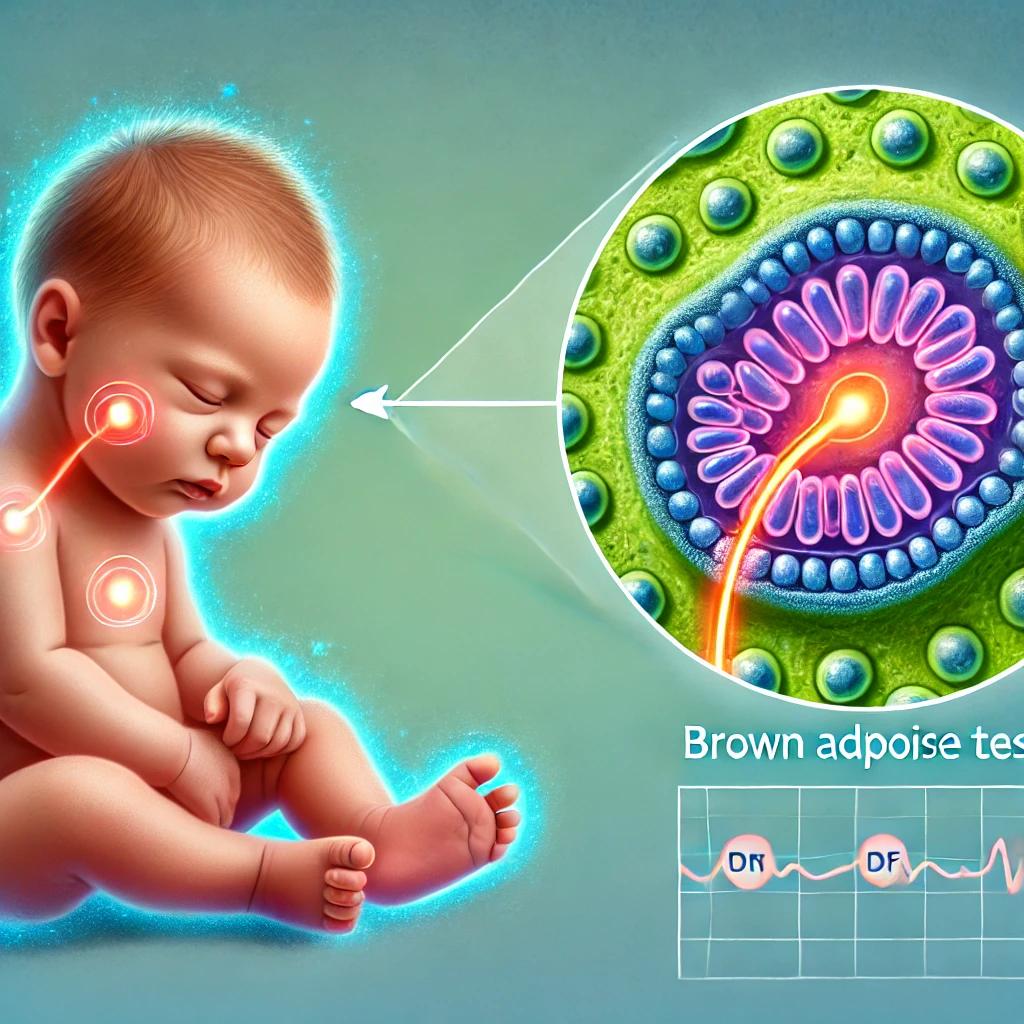Newborns use brown adipose tissue to maintain body temperature instead of muscle shivering. The mitochondria in brown fat cells break down fatty acids and generate heat through the movement of hydrogen ions to regulate body temperature. This process explains their different mechanisms for staying warm than adults.
In general, adults maintain body temperature by generating heat through behaviors such as shivering when they feel cold. This is the body’s natural response to a decrease in outside temperature, and the nervous system tries to maintain body temperature by contracting muscles to induce shivering, which in turn generates heat. Mitochondria, the building blocks of cells, play an important role in this process. Mitochondria convert glucose from food into adenosine triphosphate (ATP) and store it. Then, when the body temperature drops, ATP is broken down to generate heat through the process of muscle contraction.
However, newborns don’t have as developed muscles as adults, so they can’t shiver enough to keep warm. Instead, they rely on brown adipose tissue around their spine and kidneys to keep them warm. Unlike other fatty tissues, brown adipose tissue has the ability to generate heat. This is because brown fat cells are composed of oil droplets containing fatty acids and a large number of mitochondria.
A mitochondrion in a normal cell consists of a stroma, an inner membrane, an outer membrane, and an intermembrane space between the inner and outer membranes. The mitochondria of brown fat cells have the same structure, but they differ in that certain proteins in the inner membrane are involved in the process of thermogenesis. Here”s how these proteins work to keep a newborn baby warm.

When a newborn’s body temperature drops, a signal from the hypothalamus in the brain triggers the release of noradrenaline from the sympathetic nerve endings. This stimulates the β-receptors on the cell membrane of brown adipocytes, and fatty acids present in the brown adipocytes are transported across the outer and inner membranes of the mitochondria to the substrate. The electrons from the breakdown of fatty acids are then transferred by coenzymes to transmembrane proteins in the inner membrane. The transmembrane proteins then use themselves as a conduit to move hydrogen ions (H+) already present in the substrate into the intermembrane space.
However, when hydrogen ions move from the substrate to the intermembrane space, a difference in concentration occurs between the hydrogen ions present in the intermembrane space and the substrate. This difference in concentration creates energy, called the proton transfer force, which drives the hydrogen ions back to the substrate where they are less concentrated. However, because the inner membrane is impermeable to protons such as hydrogen ions, they must travel through specific protein channels in the inner membrane in the same way that they would travel through the intermembrane space.
Importantly, hydrogen ions travel through a protein pathway called thermogenin, which is only present in the mitochondria of brown fat cells. In the mitochondria of normal cells, hydrogen ions pass through ATP synthase on their way back to the substrate, which uses the proton transfer to synthesize ATP. In contrast, in brown fat cells, thermogenin does not use proton transfer to synthesize ATP. Therefore, hydrogen ions are accelerated by proton transfer and hit the water in the substrate, resulting in heat.
This process allows newborns to maintain their body temperature in a different way than adults. Thanks to the unique thermogenic mechanism of brown fat cells, newborns are able to maintain a relatively stable body temperature despite changes in the external environment, which is crucial for their survival. This thermoregulatory mechanism is not only observed in newborns, but also in hibernating animals. To stay warm during the winter, these animals utilize brown adipose tissue to produce the heat they need to survive.
The function of brown adipose tissue is not only important for maintaining body temperature, but also for energy metabolism. Recent studies have shown that brown adipose tissue has the potential to contribute to the prevention of metabolic diseases such as obesity and diabetes. This is because brown adipose tissue efficiently burns fat in the process of generating heat. Therefore, the activation of brown adipose tissue can have a positive impact on weight control and metabolic health, and there is potential for new therapeutic approaches.
In conclusion, the mechanism of thermoregulation in newborns is achieved through the unique thermogenic processes of brown adipose tissue. These processes play an essential role in neonatal survival and have important implications for energy metabolism. Further research into the function and role of brown adipose tissue is expected to lead to a variety of medical applications.
 I’m a blog writer. I want to write articles that touch people’s hearts. I love Coca-Cola, coffee, reading and traveling. I hope you find happiness through my writing.
I’m a blog writer. I want to write articles that touch people’s hearts. I love Coca-Cola, coffee, reading and traveling. I hope you find happiness through my writing.